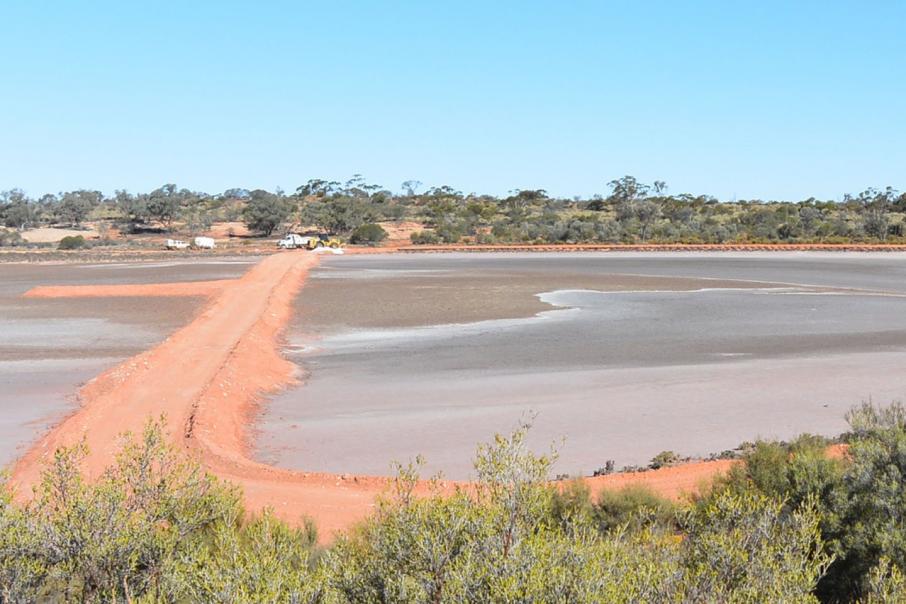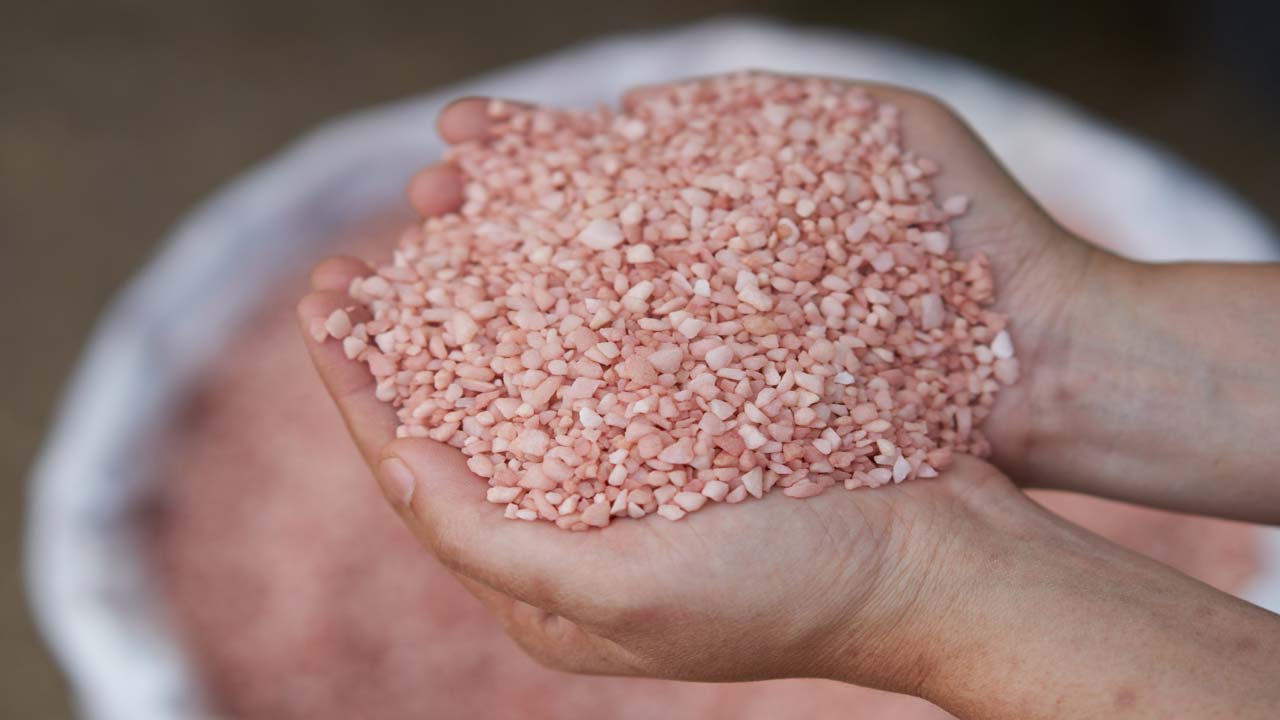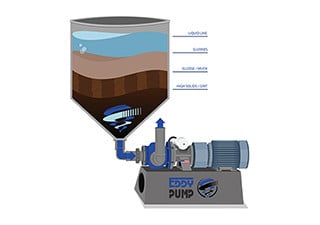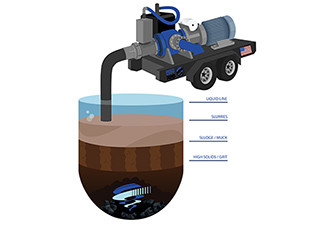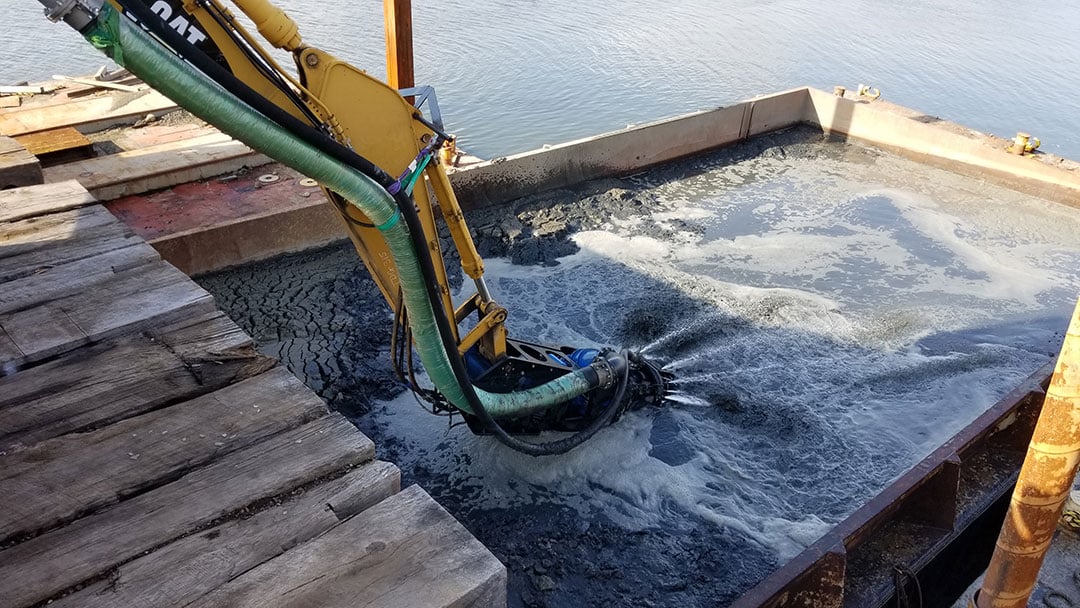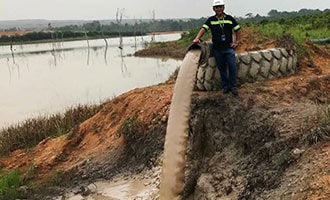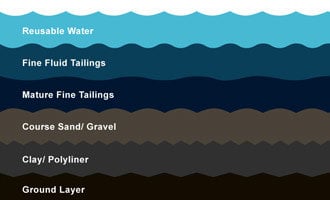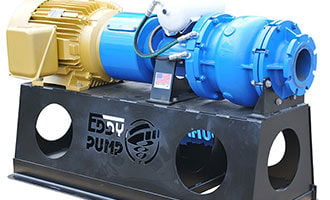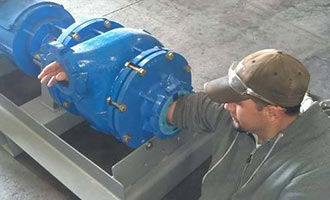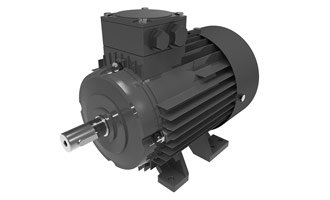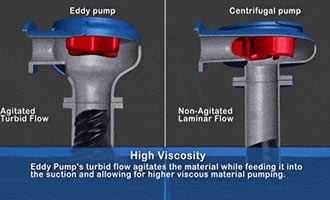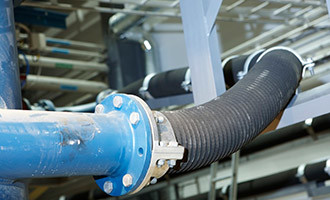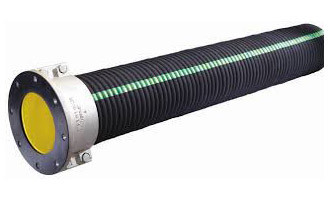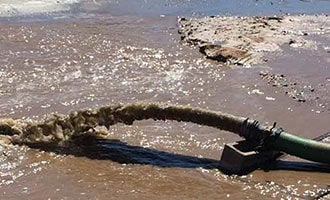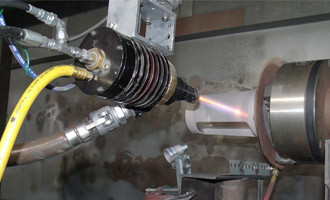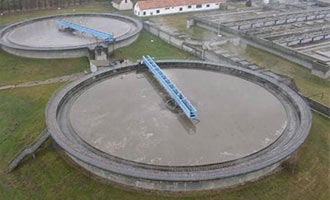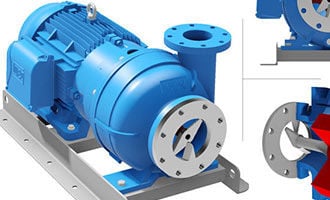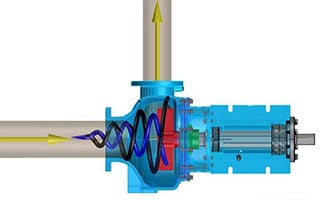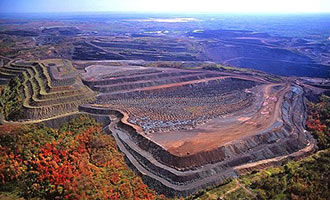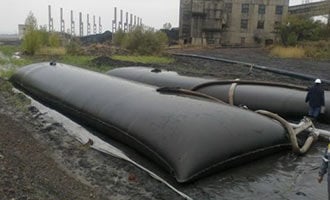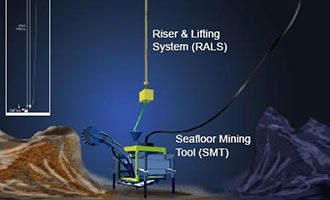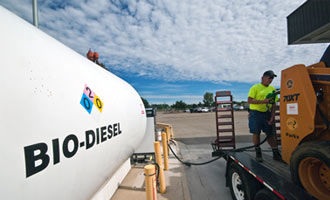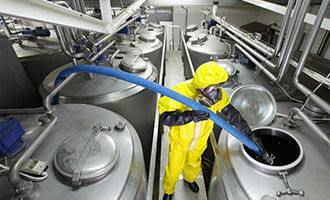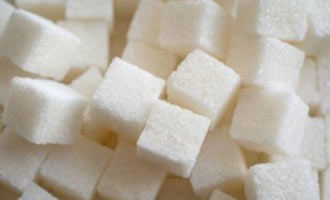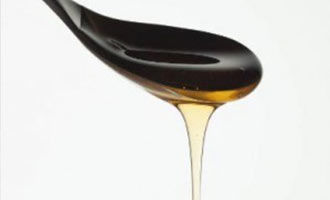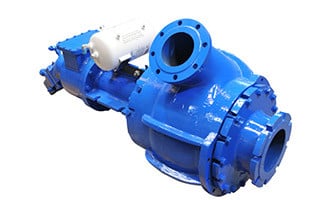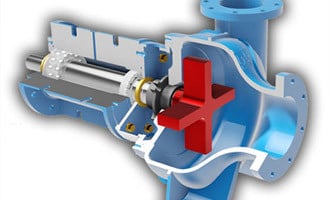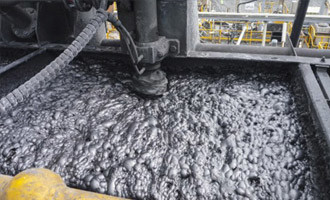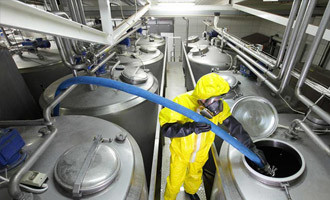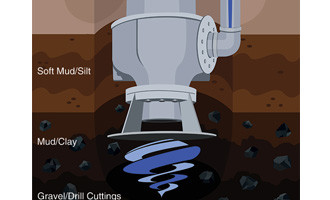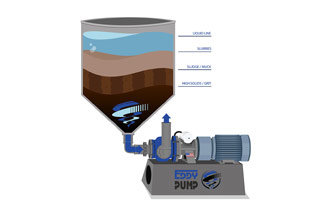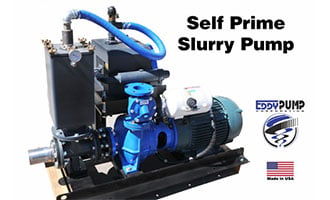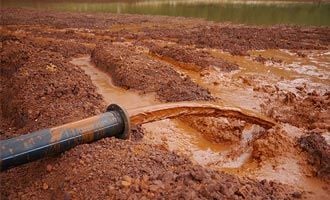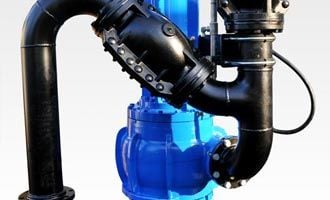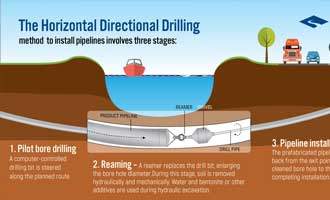Soluble Potash Pumping and Processing
Difficulties Pumping Potash Ponds
Potash (“pot-ash”) is a potassium rich compound primarily mined for fertilizer. Potash is highly abrasive and caustic, making it a difficult material to pump reliably. Find out why the EDDY Pump makes an ideal potash pump .

What is Potash?
Potash refers to potassium-rich salts that are mined from underground deposits formed from evaporated sea beds millions of years ago. The term comes from an early production technique where potassium was leached from wood ashes and concentrated by evaporating the leachate in large iron pots (“pot-ash”). Early on, it was discovered that potassium is an essential element for all plant, animal, and human life, which makes it an ideal fertilizer. Potassium is an important element because when there is a potassium deficiency in the soil, fertilizers containing potassium are used to help boost crop yields and improve the quality of the plant.
Although there have been various methods of potash production over human history, as technology progressed into the 21st century, we have come up with more and more innovative ways to produce and process potash production including utilizing the help of heavy-duty slurry pumps. The main compound that is mined and processed to produce potash is potassium chloride (KCL) which is found in deep underground deposits and ores. Potash ores are also rich in sodium chloride (NaCl) among other various salts and clays.
Shaft mining is most often used to extract potash ore, which is then brought up to the surface, ground into a powder, and pumped for further processing. However, due to the large startup costs ($2-3b) of starting a large scale mining project, many companies have sought other production methods including dissolution mining and evaporation methods from potassium-rich brines which also incorporate the usage of slurry and high solids pumps.
Potash is a bountiful resource, with deposits that can be found in many countries around the world. At the present time, the majority of deposits are primarily being mined in Canada, with China, Russia, Eastern Europe, Chile, and the United States also being large producers.
What Makes Potash Difficult to Pump
Potash production involves pumping heated water through the ore body to dissolve the potash and then pumping the resulting brine solution to a refinery for further extraction. The temperature of the deposit is an important component related to cost savings in potash production. A minimum temperature of 50 degrees Celsius is generally needed to be reached in order to increase the solubility of potash to desired needs. So, the higher the formation temperature, the higher the yield of potassium chloride in the brine solution.
As far as pumps go, the separation and processing of potash achieved by solution mining or conventional underground mining both employ the use of high-performance pumps that can stand up to highly abrasive, hot, and caustic materials with zero downtime. Due to the need for constant production rates, potash manufacturers need to be careful when selecting the best pump for the job. Standard centrifugal pumps or water pumps would quickly wear down and need constant maintenance and replacements, slowing down production and driving up costs considerably.
As you can see in the image below, potash can be highly abrasive and will quickly wear down pumps ill-equipped to deal with such highly abrasive materials.
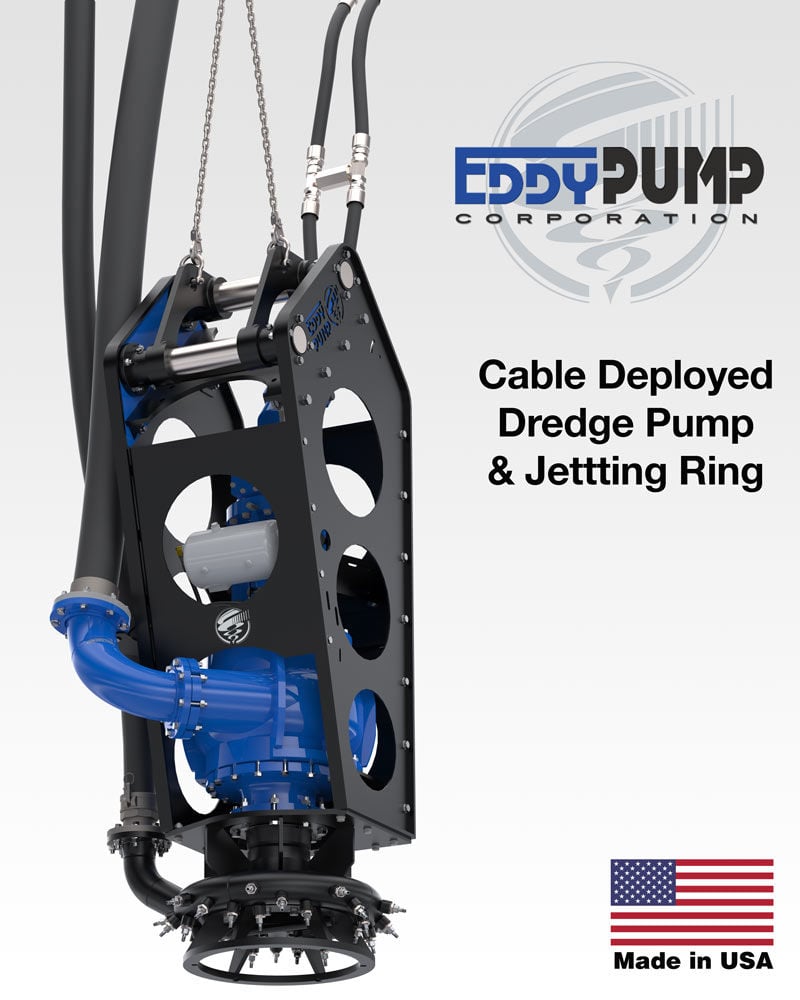
Why The EDDY Pump is Ideal For Potash Pumping
When compared to centrifugal pumps, the EDDY Pump operates in a different way to better enhance the life of the pump and increase solids production rates. Instead of utilizing a closed impeller with critical tolerances, the EDDY Pump uses a geometrically designed, recessed spinning rotor that generates the power of a tornado, or eddy current, inside the pump. In addition, this negative pressure where the rotor shaft penetrates the pump casing eliminates premature packing failure, which often causes motor bearing failure due to exposure from the system fluid or outside contaminant.
These properties give the EDDY Pump a distinct advantage when pumping high viscosity fluids or fluids with high solids content with a consistent flow rate. Additionally, the EDDY Pump is not prone to clogs due to having no close or critical tolerances between the rotor and volute. This allows the EDDY Pump to pass solid objects easily, even up to 12 inches in diameter, ensuring the pump will provide reliable operation in the harshest of environments. With all of these factors combined, the EDDY Pump has the lowest life cycle cost of any slurry pump in the market, making it ideal for potash mining and production.
Pump Deployment Options
Flooded Suction Pumps
With flooded suction pumps, the fluid to be pumped is positioned above the pump. With the pump positioned below, gravity can feed the fluid into the suction of the pump and keep the pump primed.
Submersible Pumps
Pumps that are completely submerged in the liquid are called submersible pumps. By being submerged in the fluid to be pumped, there is no need for priming.
Self-Priming Pumps
With a self-priming unit, the pump and power unit are not submerged. The suction hose goes into the slurry and the unit acts like a super-sized wet dry vacuum. Can be trailer mounted for added mobility.
Related Products
HD (Heavy Duty) Slurry Pumps
Pumping Viscous Red Mud – Highlights
Why EDDY Pumps Are Better - Highlights
This video shows how EDDY Pump transports high slurry and abrasive materials. Featured dredge pump equipment includes the Remote Operated Subdredge, Diver Operated Pump and a Excavator Attachment Dredge Pump.

